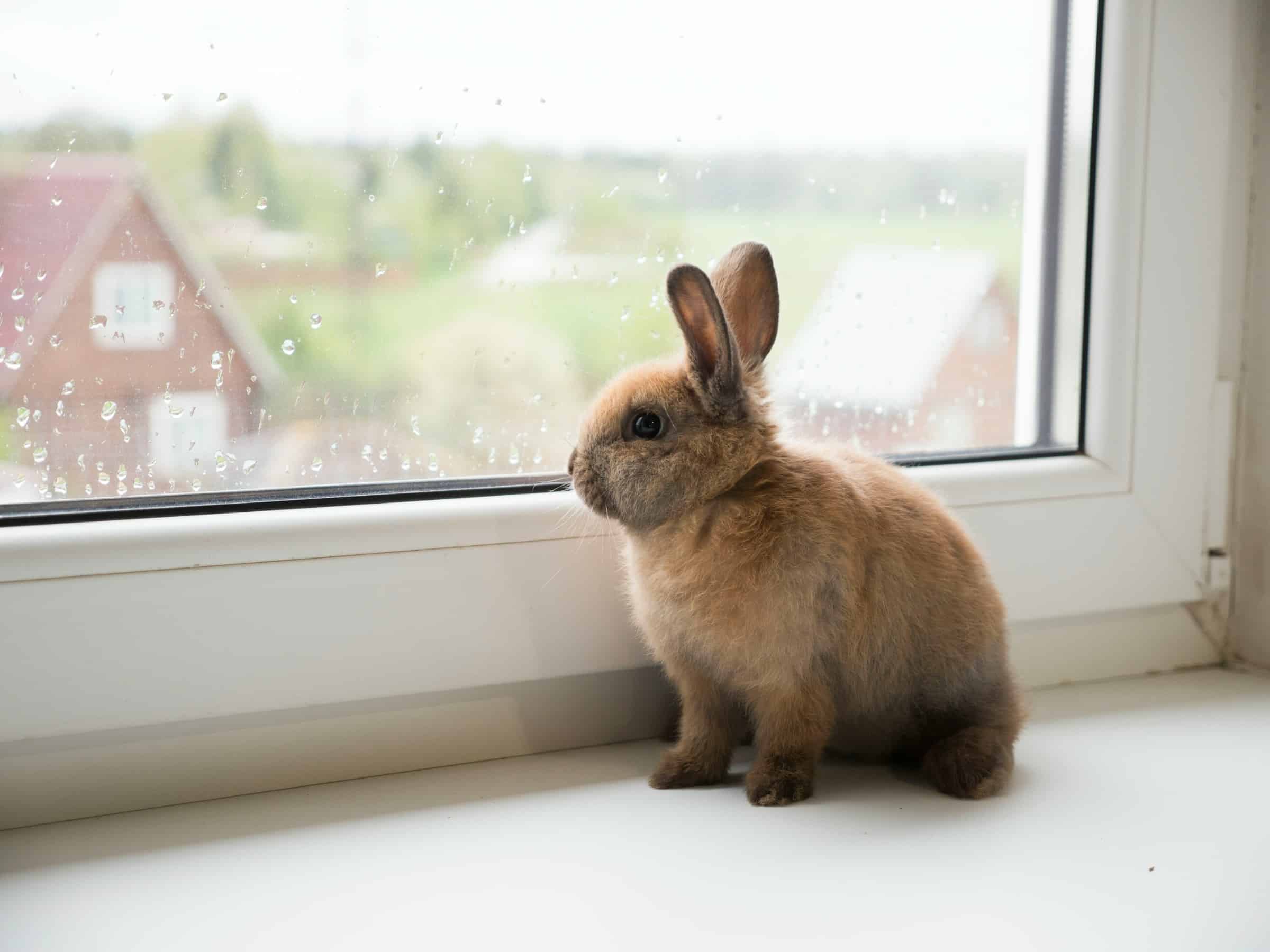What's the Best Approach to Socialize a Fearful Rabbit with Other Household Pets?

When it comes to the world of pets, it might seem like a daunting task to harmonize a fearful bunny with the more established, possibly larger, household animals. However, with the right approach, patience, and understanding of each pet's behavior, it's entirely possible to create a harmonious home environment for all your beloved critters. This article is a comprehensive guide to help you effectively socialize your timid rabbit with other household pets.
Understanding Your Rabbit's Unique Behavior
Rabbits are prey animals in nature and thus are naturally timid and anxious. It's essential to understand this inherent behavior to effectively socialize them with your other pets. Despite their cuddly appearance, bunnies often exhibit a strong flight instinct and can be easily frightened. This is why when you first bring a rabbit into your home, the animal may be hesitant or fearful around other pets.
Cela peut vous intéresser : How autogenous vaccines meet the specific challenges of poultry farming?
Start by observing your rabbit's behavior closely. Pay attention to signs of stress, such as thumping, hiding, or aggressive behavior. These are clear indicators that your rabbit is uncomfortable. Understanding your bunny's behavior is the first step to ensuring a smooth socialization process.
Gradual Introduction to Other Pets
The next step towards socializing your rabbit with other pets is a gradual introduction. This involves slowly and carefully introducing your bunny to the other animals over an extended period of time. It's important not to rush this process, as a sudden or forceful introduction could potentially scare your rabbit and reinforce its fear of other pets.
Dans le meme genre : How to Choose the Correct UV Lighting for a Parrot's Indoor Habitat?
Begin the introduction with the most docile pet in your household. It's better to start with other animals that are known for their calm and friendly behavior, such as dogs or cats. During the initial stages, keep your rabbit in a sturdy cage or playpen while the other pets are around. This will ensure the bunny feels secure while also allowing them to observe and get familiar with the other animals.
Socializing Your Rabbit with Dogs
Dogs are pack animals, and their behavior can be quite different from that of a rabbit. While some dogs may show a keen interest in your bunny, others might initially ignore it. No matter the initial reaction, the key is to supervise all interactions carefully and intervene if necessary.
During the first introductions, keep your dog on a leash and allow them to sniff the rabbit's cage. Observe your dog's reaction carefully. If they show signs of aggression or excessive excitement, distract them with a toy or treat and remove them from the room. Over time, your dog will gradually get used to the rabbit's presence and will likely become less interested in the bunny, making cohabitation easier.
Socializing Your Rabbit with Cats
Unlike dogs, cats are solitary animals and might be less interested in getting to know your pet rabbit. However, their predatory instincts might be triggered upon seeing a small, swift creature like a bunny. As such, the introduction process should be even more gradual and cautious when it comes to cats.
Start by allowing your cat to observe the bunny from a distance, without any physical contact. You can then slowly reduce the distance over time, always monitoring the cat's reaction. If your cat shows signs of aggression or excessive interest, distract them immediately and remove them from the room. With time and patience, your cat will learn to accept the rabbit as part of the household.
The Role of Human Caregivers in Socialization
While your pets are getting used to each other, it's crucial for you, as the human caregivers, to create a calm and positive environment. Use positive reinforcement techniques such as treats, praise, and petting to reward both the rabbit and the other pets for good behavior during the introduction process.
Remember, patience is the key when socializing a fearful rabbit with other pets. It may take weeks or even months for your rabbit to feel comfortable around other animals. But with persistence and understanding, you will be able to create a peaceful and harmonious living situation for all of your pets.
Use of Toys and Games in Socialization Process
Incorporating playtime into the socialization process can be very beneficial in creating a positive association for all involved pets. This can be done using various toys or games that both your rabbit and your other pets enjoy. By engaging your pets in shared activities, they can start to build a bond with each other.
For instance, you can use a rabbit toy or a chew toy that your rabbit likes and introduce it to your dog or cat. The toy will carry the scent of the rabbit, helping your other pets get accustomed to the rabbit's smell. Similarly, you can also use a toy that your dog or cat loves around your rabbit. This will help the rabbit associate the other animals’ scent with something positive, as well.
Moreover, games involving food can be very effective. You can feed your pets at the same time, but in separate areas. This can create a situation where they start associating mealtime with the presence of the other pet. However, it's important to ensure that each pet has enough space and is not forced to share food, as this can lead to territorial behavior.
Remember, it's always crucial to supervise these activities, especially in the early stages of the socialization process. If you notice any signs of stress or aggression, it's best to step in immediately and calmly separate your pets.
Creating a Harmonious Living Environment
After your pets have gotten used to each other's presence and have started bonding, it's time to create a harmonious living environment. This involves setting up shared spaces where your pets can interact freely under supervision. Having shared spaces allows the pets to interact at their own pace and in their own way.
For the rabbit, ensure that the shared space has a secure area where the rabbit can retreat if it feels threatened. This could be a rabbit cage or a small hutch. Having a secure retreat area will help your rabbit feel safe even when it is out of its enclosure and interacting with other pets.
Ensure that your other pets also have their own spaces where they can retreat. For dogs, this could be a kennel or a designated resting area. For cats, a high perch or a secluded corner can work well. Giving each pet its own distinct area can help reduce territorial behavior and make them feel at ease.
Make sure to maintain these shared spaces clean and free from elements that might cause anxiety or aggression amongst the pets. For instance, avoid leaving dog toys in the rabbit area or cat toys in the dog area. Such elements can cause confusion and lead to territorial aggression.
Remember, creating a harmonious living environment is not a one-day task. It involves constant monitoring, adjustments, and understanding of your pets' behaviors. However, with patience, persistence, and the right approach, you can create an environment where your fearful rabbit, and other pets, can coexist peacefully.
Conclusion
Socializing a fearful rabbit with other household pets can indeed be a daunting task. However, with a solid understanding of your pets’ behaviors, a patient approach, and the use of positive reinforcement techniques, it's entirely possible to create a harmonious home atmosphere.
From gradual introductions, bonding with toys and games, to creating a shared living environment — each step plays a vital role in the socialization process. As a pet parent, remember to always supervise your pets, especially during the initial stages. Also, don't forget to give each pet its own space where it can retreat if it feels threatened.
In the end, the time and effort you put into socializing your pets will be worth it. You'll not only have a peaceful home but also a home filled with happy and content pets. After all, nothing beats the joy and satisfaction of seeing your beloved pets living together in harmony.
